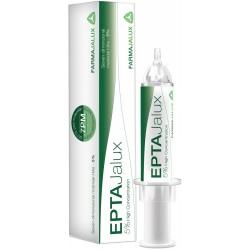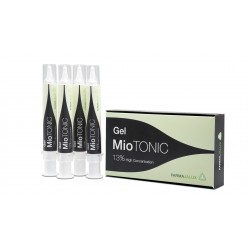Articular
CARKJMD5AIRArtrosikJALUX Gel (10%)
Based on:
- Devil’s Claw: 5%
- MSM (Methylsulfonylmethane): 1%
- Hyaluronic Acid: 1%
- Glucosamine: 1%
- Chondroitin: 1%
- Calendula: 1%
- Phytic Acid: 0.5%
High-titration molecular gel complex designed for use in conjunction with medical devices aimed at treating joint and skeletal disorders.
For Orthopedics, Physiatrists and Sport Physicians
Singular packaging with 5ml – 64mg
Class 1 Medical Device
Bibliographical Notes on Functional Plant-Based Properties
Hyaluronic Acid
Hyaluronic acid is a molecule naturally produced by the body, found in various tissues such as skin, cartilage, tendons, and synovial fluid in joint cavities.
It acts as a lubricant, cushions mechanical stress, and creates a spongy matrix that prevents the spread of inflammatory cytokines and pathogens like viruses and bacteria.
One of the most significant benefits of hyaluronic acid treatments is their chondroprotective effect.
MSM (Methylsulfonylmethane)
MSM is known for its ability to incorporate and transport sulfur, a molecule widely present in the human body and essential for joint cartilage.
Its supplementation is believed to stabilize cell membranes, slow or halt the loss of damaged cells, and stimulate cartilage synthesis.
Devil’s Claw
Devil’s claw is associated with multiple properties, particularly its anti-rheumatic effects, which reduce inflammation and alleviate associated pain.
Glucosamine
Glucosamine is a critical natural precursor of essential cartilage components such as proteoglycans and glycosaminoglycans (GAGs), helping maintain cartilage integrity.
The sulfate form of glucosamine is considered the most effective, as the sulfate group is essential for forming molecular bonds.
Chondroitin
Chondroitin sulfate is a protein component that provides elasticity to cartilage and can help slow its degradation while promoting its regeneration to better cushion joints.
Its effectiveness is enhanced when combined with glucosamine.
Phytic Acid
Phytic acid plays a crucial role in treating joint disorders by enabling other active molecules to act on joints free from mineral deposits and free radicals.
These deposits and radicals are often responsible for the progression and worsening of inflammation. Its anti-inflammatory, chondroprotective, and viscosupplementing properties are more effective when the joint has been detoxified.





















